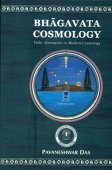Uttarayana, Uttarāyaṇa, Uttarāyana, Uttara-ayana: 22 definitions
Introduction:
Uttarayana means something in Hinduism, Sanskrit, the history of ancient India, Marathi, Hindi. If you want to know the exact meaning, history, etymology or English translation of this term then check out the descriptions on this page. Add your comment or reference to a book if you want to contribute to this summary article.
Alternative spellings of this word include Uttarayan.
Images (photo gallery)
In Hinduism
Purana and Itihasa (epic history)
Source: archive.org: Nilamata Purana: a cultural and literary studyUttarāyana (उत्तरायन) is the name of a festival that once existed in ancient Kashmir (Kaśmīra) as mentioned in the Nīlamatapurāṇa.—Uttarāyana proceeds as follows: For this ceremony are prescribed: Bath of the image of Viṣṇu or Śiva in purified butter; worship of stone image (of Viṣṇu or Śiva) with purified butter for three months; and gifts of purified butter, images made of purified butter, fuel and grass (for the cows) to be given to the twice-borns.
Source: Cologne Digital Sanskrit Dictionaries: The Purana IndexUttarāyaṇa (उत्तरायण).—When moon is there the sun becomes nīca; commences with tapa or the month of māśi;1 auspicious for death.2

The Purana (पुराण, purāṇas) refers to Sanskrit literature preserving ancient India’s vast cultural history, including historical legends, religious ceremonies, various arts and sciences. The eighteen mahapuranas total over 400,000 shlokas (metrical couplets) and date to at least several centuries BCE.
Jyotisha (astronomy and astrology)
Source: Wisdom Library: Brihat Samhita by VarahamihiraUttarāyaṇa (उत्तरायण) or Udagayana refers to the “northward march” (of the sun and moon), according to the Bṛhatsaṃhitā (chapter 5), an encyclopedic Sanskrit work written by Varāhamihira mainly focusing on the science of ancient Indian astronomy astronomy (Jyotiṣa).—Accordingly, “If the sun and moon should begin to be eclipsed when only half risen, deceitful men will suffer as well as sacrificial rites. [...] If the sun and moon should be eclipsed when in their uttarāyaṇa (northward march), the Brāhmins and the Kṣatriyas will suffer; if when in their dakṣiṇāyana (southward march) the Vaiśyas and the Śūdras will suffer. If the eclipse should commence at the northern, eastern, southern, or western point of the disc, the Brāhmins, the Kṣatriyas, the Vaiśyas or the Śūdras will suffer respectively”.
Source: Wikibooks (hi): Sanskrit Technical TermsUttarāyaṇa (उत्तरायण).—(or udagayana) Sun's northward journey from winter solstice to summer solstice. Note: Uttarāyaṇa is a Sanskrit technical term used in ancient Indian sciences such as Astronomy, Mathematics and Geometry.
Source: Shodhganga: Ajanta’s antiquity (jyotisha)Uttarāyana (उत्तरायन).—Winter solstice is known as Uttarāyana or Makara-Saṃkrānti. The word Uttarāyana, as in the original Sūryasiddhānta text, was initially meant to indicate the six month’s period when the sun moves to the north, but in later course, the date of winter solstice also came to acquire this name.

Jyotisha (ज्योतिष, jyotiṣa or jyotish) refers to ‘astronomy’ or “Vedic astrology” and represents the fifth of the six Vedangas (additional sciences to be studied along with the Vedas). Jyotisha concerns itself with the study and prediction of the movements of celestial bodies, in order to calculate the auspicious time for rituals and ceremonies.
Shaktism (Shakta philosophy)
Source: Google Books: ManthanabhairavatantramUttarāyaṇa (उत्तरायण) refers to “(performing) austerities”, according to the second recension of the Yogakhaṇḍa of the Manthānabhairavatantra, a vast sprawling work that belongs to a corpus of Tantric texts concerned with the worship of the goddess Kubjikā.—Accordingly, as Bhagavat (Viṣṇu) said to Śaṃkara: “O Śambhu! Supreme Void [i.e., paramākāśa]! (You) whose mind is centred on the goddess! The goddess in the form of Kumārī was born on Himavat’s mountain. She gave this Liṅga which is reality and the supreme cause (of all things). And I am the authority there. I, Kumārikā, am a limb of that (Liṅga). Thus, (I) abide as the bliss of my own experience of the Void. O Vyāsa whom do you contemplate having performed painful austerities [i.e., kaṣṭa-uttarāyaṇa—kṛtvā kaṣṭottarāyaṇam]?”.

Shakta (शाक्त, śākta) or Shaktism (śāktism) represents a tradition of Hinduism where the Goddess (Devi) is revered and worshipped. Shakta literature includes a range of scriptures, including various Agamas and Tantras, although its roots may be traced back to the Vedas.
Vedanta (school of philosophy)
Source: Google Books: Sannyasa UpanishadUttarāyaṇa (उत्तरायण) or Uttarāyaṇamārga refers to the “path of the Sun”, according to the commentary on the Kuṇḍika-upaniṣad verse 28.—The worshippers of the pure, resplendent Brahman (śabala-brahma) enter the world of Brahma (brahmaloka), that is, the sphere of Hiraṇyagarbha, along the path of the Sun (sūryamārga, or uttarāyaṇa-mārga) by exiting from the crown of the head (brahma-randhra) through the suṣumṇā canal; and there they are engaged in their quest for the attributeless Brahman till the end of the kalpa (till pralaya, or great dissolution, takes place). Having lived there till such time, they ultimately merge with Brahman on the attenuation of their subtle desires and attractions (vāsanā-kṣaya). Thereafter they never return to the plane of relative existence. This is the gradual liberation (krama-mukti) attained by the knowers of Brahman with attributes (saviśeṣa brahmajñānī). On the other hand, the knowers of the attributeless, absolute Brahman (nirviśeṣa brahmajñānī) will attain direct, instant liberation (sadyo-mukti), here and now (ihaiva).

Vedanta (वेदान्त, vedānta) refers to a school of orthodox Hindu philosophy (astika), drawing its subject-matter from the Upanishads. There are a number of sub-schools of Vedanta, however all of them expound on the basic teaching of the ultimate reality (brahman) and liberation (moksha) of the individual soul (atman).
India history and geography
Source: Shodhganga: Ajanta’s antiquityUttarāyana (उत्तरायन, “winter solstice”) is regarded an auspicious day. In Buddhism too, it seems to have some significance. For example, Kaṇiṣka the Kuṣāṇa king who was a great patron of Buddhism and Buddhist art selected the day of Makara-Saṇkrānti for his royal enthronement. The Hindus celebrate this day as a major festival known variously as Uttarāyana, Makara-Saṇkrānti, Lohaṛī, Pomgal, Bhogali Bihu, and so on.
Source: Cologne Digital Sanskrit Dictionaries: Indian Epigraphical GlossaryUttara-ayaṇa.—(IA 17; SII 1), the winter solstice; the period during which the sun gradually moves from south to north; cf. dakṣiṇa-ayana. Note: uttara-ayaṇa is defined in the “Indian epigraphical glossary” as it can be found on ancient inscriptions commonly written in Sanskrit, Prakrit or Dravidian languages.

The history of India traces the identification of countries, villages, towns and other regions of India, as well as mythology, zoology, royal dynasties, rulers, tribes, local festivities and traditions and regional languages. Ancient India enjoyed religious freedom and encourages the path of Dharma, a concept common to Buddhism, Hinduism, and Jainism.
Languages of India and abroad
Marathi-English dictionary
Source: DDSA: The Molesworth Marathi and English Dictionaryuttarāyaṇa (उत्तरायण).—n (S) The northing of the sun or other heavenly body; progress northwards from the tropic of Capricorn.
Source: DDSA: The Aryabhusan school dictionary, Marathi-Englishuttarāyaṇa (उत्तरायण).—n The northing of the sun progress of the sun northward from the tropic of Capricorn.
Marathi is an Indo-European language having over 70 million native speakers people in (predominantly) Maharashtra India. Marathi, like many other Indo-Aryan languages, evolved from early forms of Prakrit, which itself is a subset of Sanskrit, one of the most ancient languages of the world.
Sanskrit dictionary
Source: DDSA: The practical Sanskrit-English dictionaryUttarāyana (उत्तरायन).—(°yaṇaṃ. na being changed to ṇa)
1) the progress of the sun to the north (of the equator); अग्निर्ज्योतिरहः शुक्लः षण्मासा उत्तरायणम् (agnirjyotirahaḥ śuklaḥ ṣaṇmāsā uttarāyaṇam) Bhagavadgītā (Bombay) 8.24. cf. भानोर्मकरसंक्रान्तेः षण्मासा उत्तरायणम् । कर्कादेस्तु तथैव स्यात् षण्मासा दक्षिणायनम् (bhānormakarasaṃkrānteḥ ṣaṇmāsā uttarāyaṇam | karkādestu tathaiva syāt ṣaṇmāsā dakṣiṇāyanam) ||
2) the period or time of the summer solstice.
Derivable forms: uttarāyanam (उत्तरायनम्).
Uttarāyana is a Sanskrit compound consisting of the terms uttara and ayana (अयन).
Source: Cologne Digital Sanskrit Dictionaries: Shabda-Sagara Sanskrit-English DictionaryUttarāyaṇa (उत्तरायण).—n.
(-ṇaṃ) The period of the sun’s progress to the north of the equator, the summer solstice. E. uttara the north, and ayana going, progress.
Source: Cologne Digital Sanskrit Dictionaries: Benfey Sanskrit-English DictionaryUttarāyana (उत्तरायन).—[Mānavadharmaśāstra] 6, 10; and udagayana, i. e.
Uttarāyana is a Sanskrit compound consisting of the terms uttarā and ayana (अयन).
Source: Cologne Digital Sanskrit Dictionaries: Cappeller Sanskrit-English DictionaryUttarāyaṇa (उत्तरायण).—[neuter] the northern progress (of the sun), the winter-solstice.
Source: Cologne Digital Sanskrit Dictionaries: Monier-Williams Sanskrit-English Dictionary1) Uttarāyaṇa (उत्तरायण):—[from uttara > ut-tama] n. the progress (of the sun) to the north
2) [v.s. ...] the period of the sun’s progress to the north of the equator, the summer solstice, [Manu-smṛti; Bhagavad-gītā; Varāha-mihira’s Bṛhat-saṃhitā; Pañcatantra etc.]
Source: Cologne Digital Sanskrit Dictionaries: Yates Sanskrit-English DictionaryUttarāyaṇa (उत्तरायण):—[uttarā+yaṇa] (ṇaṃ) 1. n. The half year the sun is to the north.
[Sanskrit to German]
Sanskrit, also spelled संस्कृतम् (saṃskṛtam), is an ancient language of India commonly seen as the grandmother of the Indo-European language family (even English!). Closely allied with Prakrit and Pali, Sanskrit is more exhaustive in both grammar and terms and has the most extensive collection of literature in the world, greatly surpassing its sister-languages Greek and Latin.
Hindi dictionary
Source: DDSA: A practical Hindi-English dictionaryUttarāyaṇa (उत्तरायण) [Also spelled uttarayan]:—(nm) the summer soltice when the sun is on the north of equator.
...
Kannada-English dictionary
Source: Alar: Kannada-English corpusUttarāyaṇa (ಉತ್ತರಾಯಣ):—
1) [noun] the progress of the sun to the north of the equator.
2) [noun] summer solstice a) the point on the celestial sphere where the sun is farthest north of the celestial equator; b) the moment or date of this annual event.
3) [noun] the period or time of the summer solstice.
Kannada is a Dravidian language (as opposed to the Indo-European language family) mainly spoken in the southwestern region of India.
See also (Relevant definitions)
Partial matches: Uttara, Ayana.
Starts with: Uttarayanacakra, Uttarayanam, Uttarayanamarga, Uttarayanasamkranti.
Ends with: Kashtottarayana.
Full-text (+72): Udagayana, Ayana, Uttarayanam, Dakshinayana, Makarasankranti, Makarasamkranti, Uttarayanasamkranti, Udanayana, Laukikamana, Matsyapurana, Samkranti, Parparina, Pitriyana, Suryadvara, Pancashukla, Trishukla, Upashruti, Uttarayanamarga, Konkanadesha, Mudunira.
Relevant text
Search found 56 books and stories containing Uttarayana, Uttara-ayana, Uttara-ayaṇa, Uttarā-ayana, Uttarāyaṇa, Uttarāyana; (plurals include: Uttarayanas, ayanas, ayaṇas, Uttarāyaṇas, Uttarāyanas). You can also click to the full overview containing English textual excerpts. Below are direct links for the most relevant articles:
Shrimad Bhagavad-gita (by Narayana Gosvami)
Verse 8.24 < [Chapter 8 - Tāraka-brahma-yoga (the Yoga of Absolute Deliverance)]
Puranic encyclopaedia (by Vettam Mani)
The Skanda Purana (by G. V. Tagare)
Chapter 24 - Origin of Viṣṇupadī Tīrtha < [Section 1 - Tīrtha-māhātmya]
Chapter 42 - The Festival of the Transit (of the Sun) to Capricorn < [Section 2 - Puruṣottama-kṣetra-māhātmya]
Chapter 79 - Greatness of Lakulīśvara (Lakuli-īśvara) < [Section 1 - Prabhāsa-kṣetra-māhātmya]
Prasthanatrayi Swaminarayan Bhashyam (Study) (by Sadhu Gyanananddas)
2.3. Īśvaras’ Bondage < [Chapter 3 - Analysis on the Basis of Metaphysics]
Rasa Jala Nidhi, vol 5: Treatment of various afflictions (by Bhudeb Mookerjee)
Part 3 - The Age of the Mahabharata War < [A Brief History of Indian Chemistry and Medicine]
Historical Elements in the Matsya Purana (by Chaitali Kadia)
Dāna (donation) in the Matsya Purāṇa < [Chapter 5 - Cultural history in the Matsya-Purāṇa]
Vows (Vrata) in the Matsya Purāṇa < [Chapter 5 - Cultural history in the Matsya-Purāṇa]
Related products


